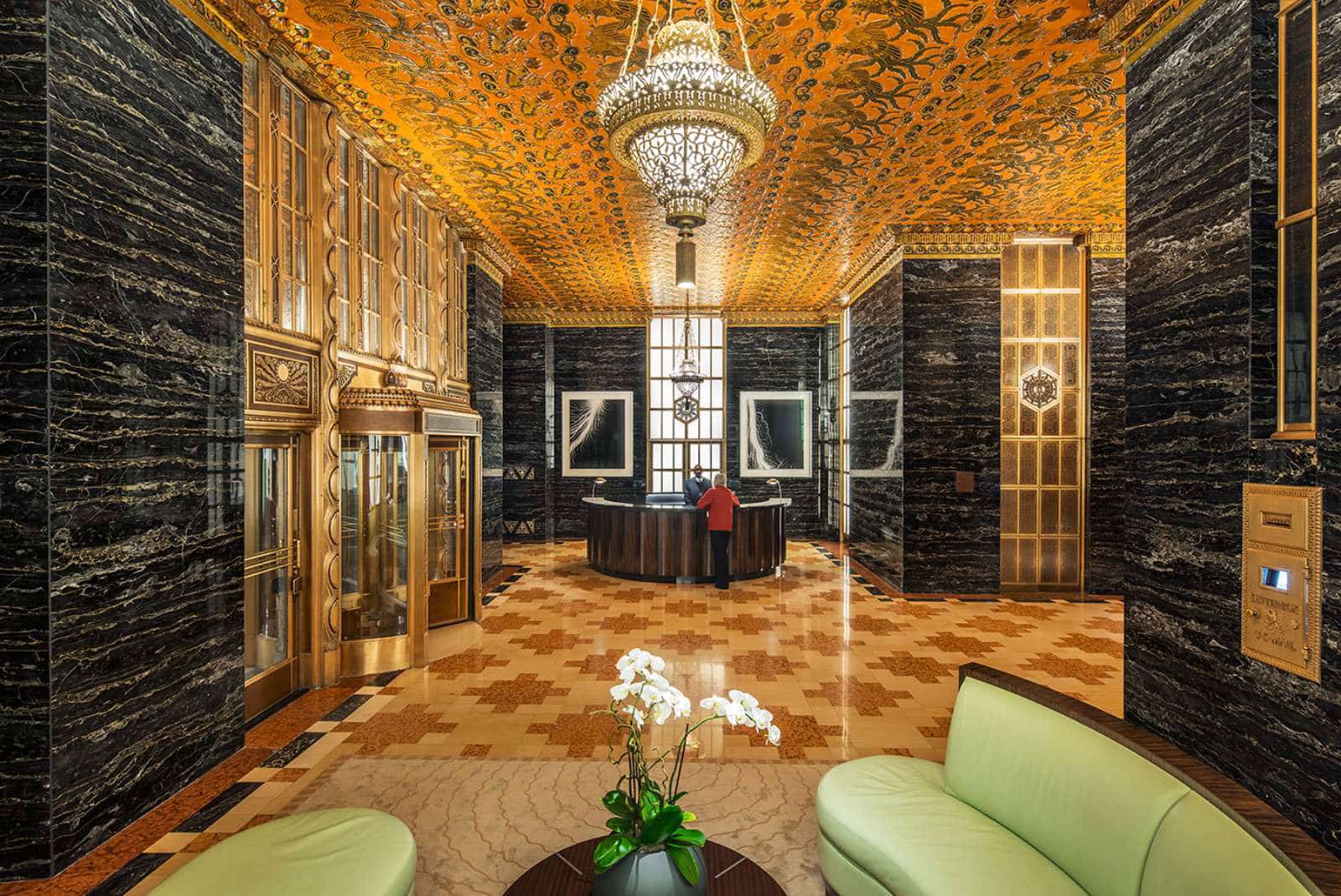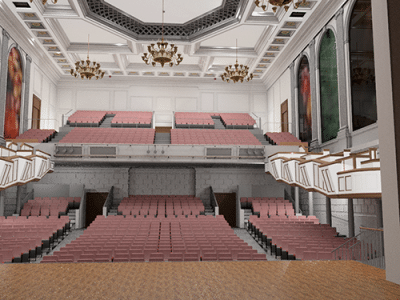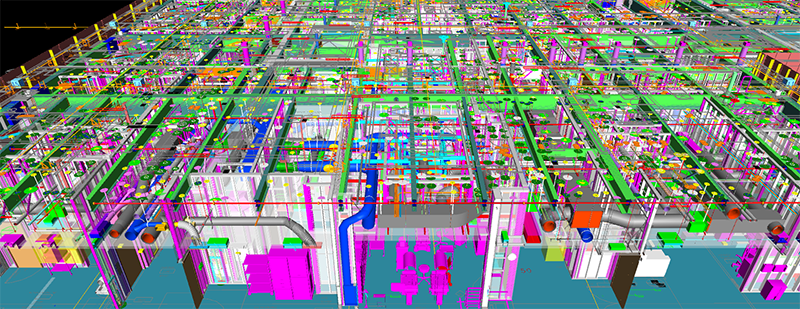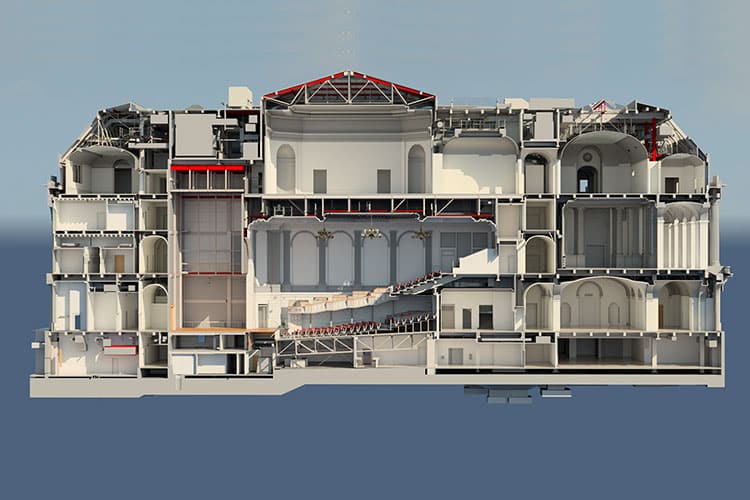San Francisco-based BIM firm Modulus Consulting has worked on some of the most notable buildings in the Bay Area, including the highly publicized renovation of the 140 New Montgomery building, formerly the PacBell building. The Timothy Pflueger-designed Art Deco masterpiece was the tallest building in San Francisco when it was erected in 1925, and the 26-story structure features 1,300 windows, a terra cotta exterior, and an ornate lobby symbolic of the classy grandeur of its time.

The firm also provided BIM coordination, structural design modeling, and trade contractor modeling on Sutter Health’s new $2 billion California Pacific Medical Center: Van Ness & Geary Campus project in San Francisco which utilized shock-absorbing viscous wall dampers to offset seismic activities.
Given Modulus’ experience handling BIM execution on complex projects, we asked Peter Michealsen, Managing Principal of Modulus, to explain how they plan and execute coordination and how they handle BIM handoff for facilities management (FM).
Coordinating Massive Projects
What is your approach to coordinating large-scale projects?
Every project is unique, so we start by evaluating our client’s coordination goals and budget with what our experience tells us is an effective approach for that type of project. We then create a tailored BIM coordination plan for the project to set a roadmap and expectations for the team.
When we are brought in early enough on a project, we like to do high-level coordination with the designers and general contractor to work out the big picture items first. This allows the designers to address the most significant design issues before subcontractor buyout, eliminating many potential change orders and project delays.
What is the most common coordination challenge you have to overcome, and how do you get around it?

Conflicts of interest. Under the typical design-bid-build and design-build contract, the trade contractors are incentivized to coordinate their system’s installation as efficiently as possible for their company, even if it is at a greater cost to the project as a whole. There are three ways to deal with it:
You can use an IPD (Integrated Project Delivery) contract, which incentivizes collaboration among the whole project team to find the most cost-effective installation for the whole project, not just their company, by having shared risk and reward.
If you are not doing an IPD contract, you can have a neutral third party like Modulus perform the MEPF modeling and coordination on behalf of the trade contractors, which adds efficiency by eliminating much of the communication latencies and coordination debates that so often take place.
Lastly—and this is critical regardless of what your contract type is and who is doing the modeling—you need an experienced coordinator who knows MEPF systems so they can spot constructability issues that geometry-based clash detection cannot, and who can competently lead and direct the trade contractors when there is a disagreement.

BIM Handoff and FM
As a BIM consultant, how does Modulus handle the BIM handoff process with builders and/or clients?
We are clear with our clients upfront that they will need to participate in the creation of the models by providing us the information we base the model on, answering questions we have as we work on it, and reviewing and accepting the work at hand-off.
How prevalent is BIM in the FM world? How much data do you like to give to owners?
Not as prevalent as it should be. Very, very few facilities managers are actively using models today, but that will change. As FM software improves and there are more building owners willing to invest in it, we will start to hear stories of the real ROI that BIM offers to facilities, and eventually it will become the norm.
We are happy to provide as much data as owners ask and pay for. The question is, how much data do owners really benefit from? Providing cut sheet info like manufacturer name and model number of a light fixture is useful data to have. Providing the website and phone number for the manufacturer may be helpful, too. Providing the physical address of the manufacturer’s headquarters, sales rep’s name and his golf handicap is probably going too far.
What are the most important things to keep in mind when planning for FM?
Bring your head of facilities and building engineers in to the design conversation at the beginning. I have seen it happen several times where an owner brought in their facilities staff after things were already designed and coordinated, and they requested significant changes that could have been easily accommodated if they were included in the planning and design.
Because there is no clear winner or obvious choice with regard to FM software, the best approach is to keep the data in a format that is as flexible as possible, so when the building owner decides which software to use, it’s more of a data dump than endless manual entry.











